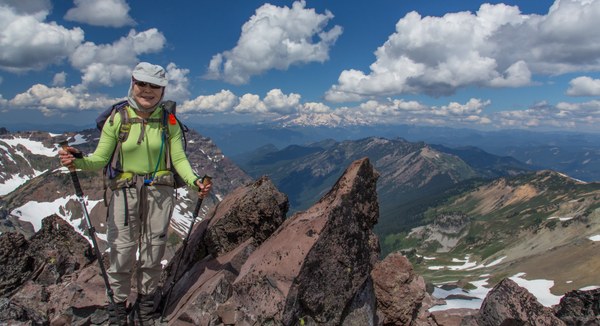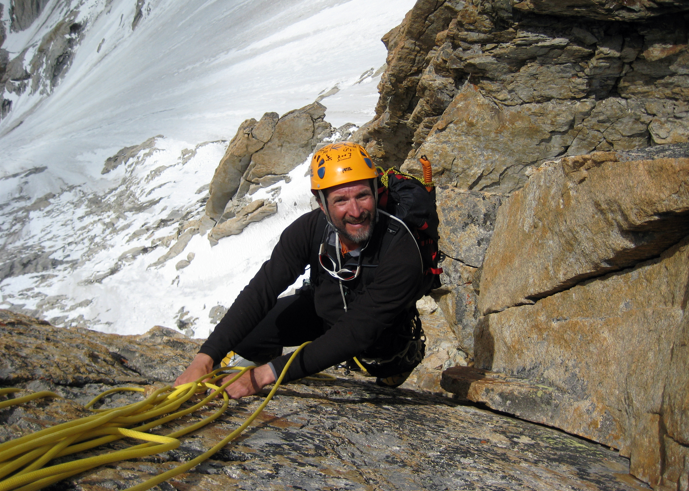
Written by Steve Swenson and Scott Johnston
Steve Swenson and Scott Johnston, both 67, have a combined 103 years of climbing between them. Steve is still making first ascents in the Karakoram, and Scott is an active climber and co-founder of Uphill Athlete, a service that offers educational resources, training plans, and coaching to amateur and professional mountain sports athletes.
The two have accomplished incredible things in the mountains, and continue to climb long past the age when many people hang up their harnesses. We asked Steve and Scott to share their stories as lifelong climbers, and tell us their secrets for maintaining mountain fitness as they age.
Photo by Tim Nair.
Steve Swenson
Although modern climbing originated in Britain's upper classes in the mid-19th century, by the 1960s and 70s, many of the young elite climbers venturing into the Great Ranges came from working class backgrounds. They enjoyed poking fun at the stodginess of older practitioners, and it was around that time when I first started climbing. Several of my heroes claimed that alcohol induced hangovers were a good simulation for living at high altitude - at that time it was still a fringe sport, and a coaching and training infrastructure hadn’t yet emerged.
In 9th grade, I started climbing with the Boy Scouts and joined my high school cross country team. Initially my interest in the two sports was separate. Later I realized the coaching and training I received for an endurance sport like distance helped me build a fitness foundation that also increased my capabilities as an alpine climber. Daily practice in high school with my running teammates taught me the benefits of consistency. Interval workouts showed me that short, maximal efforts improved speed and power. Overdoing it without the necessary training volume taught me that overworking is a good way to get injured.
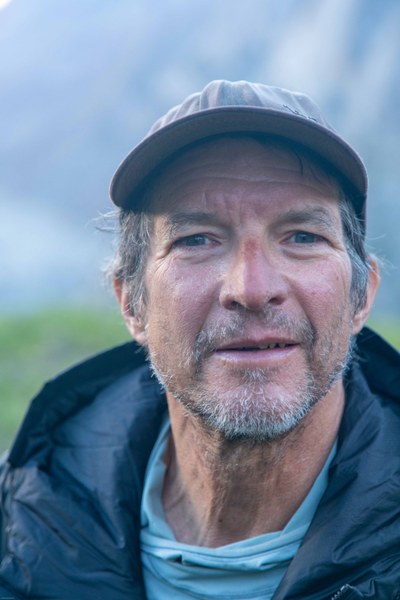 Photo of Steve Swenson.
Photo of Steve Swenson.
Later, as an engineering student, I forged a handful of partnerships with more experienced people through the University of Washington's Climbing Club. I still had a lot to learn about climbing, but the strength I built from endurance training enabled me to perform well enough to be invited on trips to Canada and Alaska. These opportunities would lead to future expeditions in the Great Ranges of South Asia.
Instead of living in a van and traveling around North America to climb full time, I chose to pursue my career in engineering and climb part-time. This inhibited my development as a technical climber on rock and ice, which takes thousands of hours to perfect. But soon the Vertical Club (later changed to Vertical World), the world’s first indoor rock-climbing gym, opened in Seattle in 1984. Having access to this facility allowed me to practice and train for climbing in a way that traditional gyms couldn’t provide. Indoor work, ongoing distance running, and outdoor climbing as much as I could allowed me to achieve many of my climbing goals.
Climbing gyms have driven a huge growth in participants, which in turn has created a growing market for science-based training and coaching for mountain sports. As this information has become more available, I continued to adapt my earlier training programs to be more consistent with this new body of knowledge.
Aging inherently reduces recovery time between workouts, and this decreases the volume of training that I can do. Sarcopenia is the inevitable process of losing muscle mass as we age, and it accelerates over time. By building and maintaining fitness over a long period before sarcopenia becomes as significant, strength can be maintained for a longer period because this degradation impacts a greater muscle mass to begin with. I continue to benefit from the foundational training work that I began many years ago and the dedication it has taken to maintain it. Regardless of age, training is important because it will slow this process of muscle loss.
Scott Johnston
Like Steve, I started climbing in my youth in the early 1970s. One of the most attractive aspects of climbing to me at that time was the romantic and rebellious nature of the same heroes that Steve looked up to. Many of the super stars of climbing in those days prided themselves as not being paragons of healthy living; smoking, boozing and doing all manner of illegal drugs.
My views shifted when I read Reinhold Messner’s The Seventh Grade. In it I saw a picture of the greatest alpinist in the world running up a steep trail. The caption said that Messner could ascend 1,000 meters in an hour. I was a mountain runner from an early age, but these simple few words lit a fire in me to start training for climbing. I ran a lot when I wasn’t climbing. Something that became very apparent very quickly was that I was leaving my climbing partners in the dust on long days in the mountains. The more I trained, the faster I got in the mountains.
My parents’ idea of being in the outdoors was a beer and a cigarette on the back porch. Needless to say, not having an adult to direct me in my climbing pursuits left me to my own adolescent devices. My high school buddy and I pooled our summer lifeguard money and bought a used rope. We had no idea how to belay or rappel, and only knew knots we’d learned in the Boy Scouts. To say we were game would be a dramatic understatement. We tied the rope around our waists and, using the modern term for it, we simul-climbed routes up to 5.7 in and around our home in Boulder, CO.
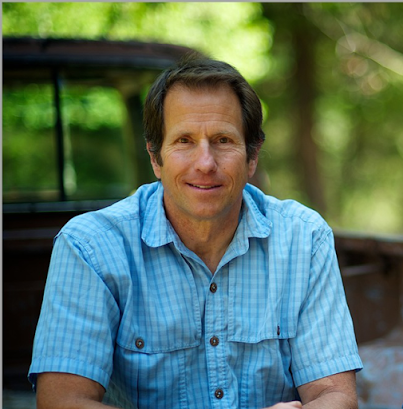 Photo of Scott Johnston
Photo of Scott Johnston
By dint of not killing ourselves we gained the notice of some of the seasoned climbers in Boulder, who took us under their wing and steered our climbing development. Within a few years I was climbing big walls in Yosemite, serious alpine routes in the Canadian Rockies, Denali by the Muldrow Glacier route (where I had a chance meeting with Steve), as well as making the third legal ascent of Ama Dablam in alpine style.
Throughout this period I was experimenting with my training. I used bouldering for climbing strength, running, cross country skiing, and ski touring for endurance training, and devoured books on training and exercise physiology. When I met alpine climbing legend Steve House, we formed a climbing partnership. Shortly thereafter I began to advise Steve on his training. I ended up coaching Steve through the peak of his professional alpine climbing career from about 2001 to 2010, when he had a near death climbing accident. While on a book tour to promote his memoir Beyond the Mountain, Steve found himself regularly asked how he trained to do all these amazing climbs. He developed a one liner: “I could tell you, but it would take a whole book.” It was then that he suggested we write down what he had done to train, in case some other alpinists might be interested. What we thought might be a 100-page Kinkos project morphed into a 450-page book, Training for the New Alpinism. We expected that we would write this book and go back to our lives afterwards, because almost no mountaineers or alpinists trained the way athletes do. How wrong we were. We were inundated by requests for training advice and coaching. We scrambled to put together our current business, Uphill Athlete, and our website UphillAthlete.com. A following book, Training for the Uphill Athlete, co-authored with mountain running legend Kilian Jornet, was rolled out three years later to reach a broader audience with these same fundamental principles that underlie proper training for endurance.
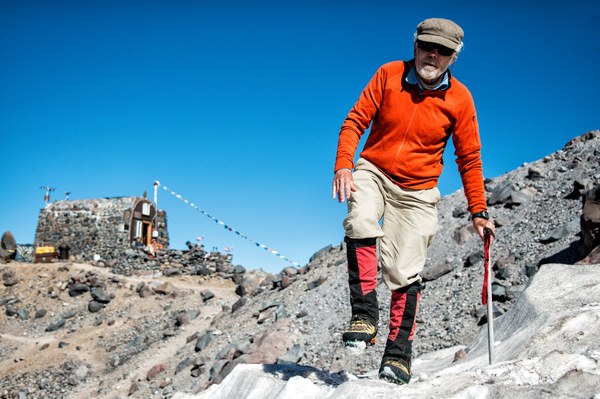
Cebe Wallace. Photo by Mike Warren.
Scott’s fitness tips for older athletes
It’s never too late to improve
Just because you came to the mountains later in life, or have never engaged in training for your mountain pursuits, does not relegate you to the “hopeless” category. It is never too late to take up the challenge of improving your fitness. One thing I can assure you is that increasing your fitness will allow you to enjoy the mountains more: more often, more safely, and for more years to come. One mountaineer coached by Uphill Athlete just became the third oldest person to climb Mt. Everest, at the age of 75. He came to mountaineering and training for it late in life. He accepted Everest as a long-range objective, and worked for three years to prepare for this success. If you train intelligently and consistently, you can see improvement in your performance at any age.
Consistency is key and helps avoid injury
Despite what you may read in the popular press, there are no short cuts to fitness. It take patience and consistency. The older you are, the more patience and consistency you will need to see sustained gains. Your body at any age will adapt to training if, and only if, you give it small frequent nudges in the right direction. Occasionally bludgeoning it with the sledge-hammer approach will not be successful and greatly increases the risk of injury. This is the single biggest training mistake I see: doing little or no exercise for days and sometimes weeks at a time, then overdoing it either in a fit of enthusiasm or on some mountain adventure. A very important but overlooked concept of training is: you don’t get fitter during the training session, you get fitter during the recovery between training sessions. Remember that enforced breaks due to injuries tend to be the biggest setback for the aging mountain athlete, so make sure and stop when you begin to feel some niggling pain.
Go slow and steady
Do you hit it hard on weekends and then need the whole week to recover? That’s a sure sign that you’re missing the boat with your approach to training. The multitude of adaptations that your body makes as it becomes fitter take time to occur. Imposing a higher training load than you are capable of absorbing will decrease your ability to train consistently, resulting in the opposite of the ideal training effect we seek.
We recover from a bout of exercise more slowly as we age, and it becomes noticeable after about 45 years old. Recovery becomes slower and slower in the decades after that. For this reason it’s key to adopt a consistent training program of an appropriate difficulty, so that you can train multiple times a week without needing long recoveries.
Adopt a gradual progression
A good training program will have a gradual progression in training load. A plan like this will take you from your current level of fitness to a new level over the course of weeks, months, and even years of gently nudging your body to adapt to the added stress. Although this is rarely the case in real life, you will be far better off by underestimating your starting point. It is relatively easy to increase the training load if after 3-4 weeks it is feeling too easy. Starting too high is likely to end with the wheels coming off in 2-3 weeks, often with disastrous both physically and for your motivation. This can lead to a start/stop approach that ends in frustration, injury and/or overtraining.
A gradual progression in training load will mean adding no more than 10-15% to the training load, often best measured by time spent, over the course of 3 weeks. If you are training less than 4 hours a week you might be able to get away with 15-20% increases. To add much more than this will usually end badly in a few weeks. That plan will also have some modulation of training load built into it. Harder days are followed by lighter days, and harder weeks are followed by easier weeks. Rest before you need to.
Focus on strength training
Strength training should be a key component of every aging athlete’s program, as we lose strength at an alarming rate past 50 years old. Anyone with a limited recent history of strength training should engage in low-resistance, high-repetition (12-20 repetitions) exercises for several months to condition their muscles to higher loads. These can be simple body weight exercises like pushups (can be done from the knees if needed), chair dips, stepping up onto a low stool (12”-16”), split squats, or pull-ups (using assistance if needed). There is nothing magic about this list - be creative. Do this little routine twice a week, gradually increasing the resistance of these exercises as you feel strength gains accumulate.
After this substantial conditioning period, begin the “try hard” work using the same exercises you’ve been using in the conditioning period but with more resistance, so that you can only complete 4-8 repetitions at a time.
Employ specificity and cross training
Try to have your training mimic your desired activities as much as you can. Mountain sports are foot-borne so foot-borne activities should be much of your training. However, varying your exercise modality can help prevent overuse injuries and alleviate the tedium of doing the same routine day in and day out. Having a group of like-minded folks to get out with is a great motivator.
We have seen amazing results from people who do not have regular access to mountains or even hills. Remember the 75 year old who climbed Everest? He lives in Chicago and did all of his endurance training on either a treadmill, a stair machine, or hiking stairs in tall buildings. These exercise modalities may be less than ideal, mainly due to boredom, but they do work if you use two of the principles outlined above: consistency and modulation.
ADDITIONAL RESOURCES
There is not enough room in this brief article to cover all the aspects that go into making up good training practices. In addition to visiting UphillAthlete.com, we encourage you to explore the resources below to dive deeper into activity and age-specific training tips:
Training for the New Alpinism
This text will lead you through the physiology of endurance in a way that does not require a degree in biochemistry. It explains in detail the various training methods, as well as when and how to use them, so that you may create your own training plan. Sprinkled through the book are inspiring full-page color photos and stories.
Training for the Uphill Athlete
The follow-up text to Training for the New Alpinism, Training for the Uphill Athlete focuses mostly on the sports of mountain running and ski mountaineering. Its physiology section is more accessible to the average reader, while retaining the scientific underpinnings of the first book. Both books make clear that the principles discussed apply to any endurance athlete who goes into the mountains, from alpinists to backpackers. This second book spends more time helping the reader build his or her own training program.
This article originally appeared in our Fall 2021 issue of Mountaineer Magazine. To view the original article in magazine form and read more stories from our publication, visit our magazine archive.
 Steve Swenson
Steve Swenson
